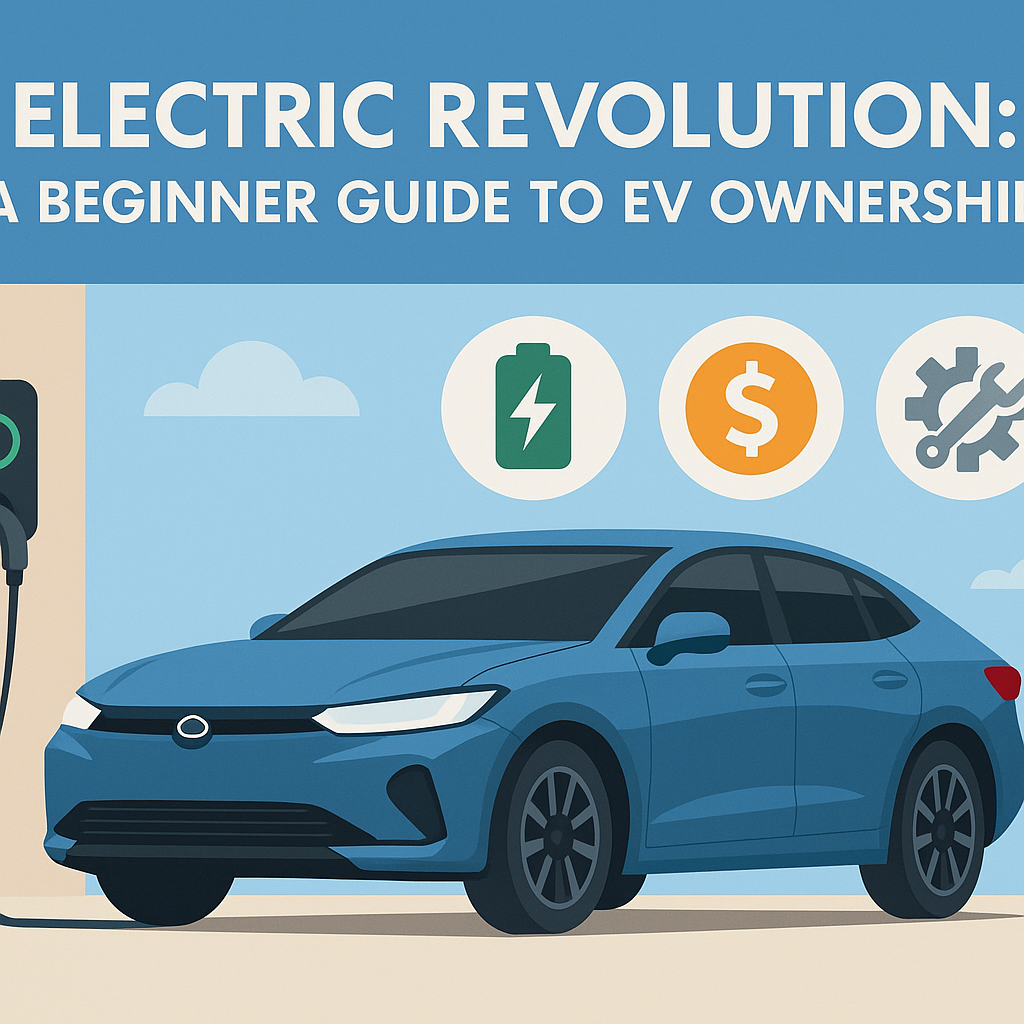The electric vehicle (EV) revolution is no longer coming—it’s already here. With more automakers offering plug-in options and government incentives making them more accessible, more U.S. drivers are considering making the switch. But for first-time EV owners, the leap can feel overwhelming.
What do you need to know before buying?
How does charging work?
Is maintenance really that cheap?
This beginner-friendly guide answers the most common questions and walks you through what it’s really like to own and drive an EV in 2024.
What Is an Electric Vehicle (EV)?
An electric vehicle is powered entirely by an electric motor using a rechargeable battery, with no internal combustion engine. Unlike hybrids, EVs do not use gasoline at all—they must be plugged in to recharge.
Common EV types:
BEV (Battery Electric Vehicle): Fully electric (e.g., Tesla Model 3, Nissan Leaf, Ford Mustang Mach-E)
PHEV (Plug-in Hybrid Electric Vehicle): Runs on electricity and gas, but can drive limited miles on electric power alone (e.g., Toyota Prius Prime)
This guide focuses primarily on fully electric (BEV) ownership.
Why More People Are Choosing EVs
Lower running costs: Electricity is cheaper than gas in most areas
Fewer moving parts = less maintenance
Smooth, quiet driving experience
Instant torque and fast acceleration
Tax incentives and rebates
Zero tailpipe emissions
How Charging Works
One of the biggest changes in EV ownership is learning how to charge instead of refuel. Fortunately, it’s simpler than you think.
Three charging levels:
Level 1 (120V): Standard home outlet
Adds ~3–5 miles of range per hour
Best for overnight top-ups or low-mileage drivers
Level 2 (240V): Home or public charger
Adds ~25–30 miles per hour
Most EV owners install one at home
DC Fast Charging: High-speed public stations
Adds ~100–200+ miles in 20–40 minutes
Useful for road trips and emergencies
Home Charging Setup
Most EV owners install a Level 2 charger at home. This requires a 240-volt outlet and can cost $500–$2,000 depending on equipment and electrician fees. Many states offer rebates or tax credits for charger installation.
Tip: Charge your EV overnight during off-peak hours to save even more.
Where to Find Public Charging
Apps like PlugShare, ChargePoint, Electrify America, and Tesla Supercharger Network help you locate and monitor charging stations in real time. Many newer EVs even integrate these tools into their infotainment systems.
Cost of EV Ownership
EVs tend to cost more upfront but save thousands over time.
Here’s what to expect:
Purchase Price: Varies, but federal tax credit (up to $7,500) can reduce it
Charging Costs: ~3–5¢ per mile vs. 10–15¢ per mile for gas
Maintenance: ~40% lower than gas cars over the life of the vehicle
Insurance: Slightly higher due to vehicle value, but discounts available for safe driving
Maintenance and Reliability
EVs have fewer mechanical parts—no oil changes, spark plugs, or transmission repairs. Typical maintenance includes:
Tire rotations
Cabin air filter replacements
Brake fluid checks (brakes last longer due to regenerative braking)
Battery coolant service (every few years)
Most EV batteries are built to last 100,000–200,000 miles or more, with 8–10 year warranties from manufacturers.
Range Anxiety: Should You Worry?
Range anxiety is the fear of running out of battery mid-drive. While valid in the past, modern EVs now average 250–350 miles per charge, with some exceeding 400 miles.
Tips to manage range:
Start each day with a full charge
Plan routes with available charging stops
Use regenerative braking to conserve power
Pre-condition the cabin while plugged in
For most daily use, EV range is more than enough.
Are EVs Good for Road Trips?
Yes—with a little planning. Use apps or your car’s nav system to plan stops at DC fast chargers. Many newer models even adjust routes based on remaining battery and station availability.
Popular fast-charging networks include:
Tesla Supercharger (exclusive to Tesla unless opened up in your region)
Electrify America
EVgo
ChargePoint
Incentives and Rebates in 2024
Federal EV Tax Credit: Up to $7,500 for qualifying models and buyers
State Rebates: Vary widely—some offer up to $5,000
Utility Rebates: Discounts on home chargers or off-peak charging plans
HOV Lane Access: In some states, EVs qualify for solo HOV access
What to Consider Before Buying
Do you have home charging access?
How far do you drive daily?
Are there public chargers near you or on your route?
Do you qualify for tax credits or rebates?
What’s your climate? (Extreme cold can reduce battery efficiency)
Top EVs for First-Time Buyers (2024)
Chevrolet Bolt EUV: Affordable and practical
Hyundai Ioniq 5: Stylish with long range and fast charging
Tesla Model 3: Popular with access to Supercharger network
Ford Mustang Mach-E: Great performance and spacious interior
Nissan Leaf: Budget-friendly and reliable
Final Thoughts: Embrace the Electric Future
Owning an EV today is simpler, more practical, and more rewarding than ever. With improved charging networks, better range, and lower lifetime costs, EVs are quickly becoming the smart choice for modern drivers.
Start with your needs—commute, budget, charging access—and explore models that fit. The electric revolution isn’t coming. It’s already waiting in your driveway.

